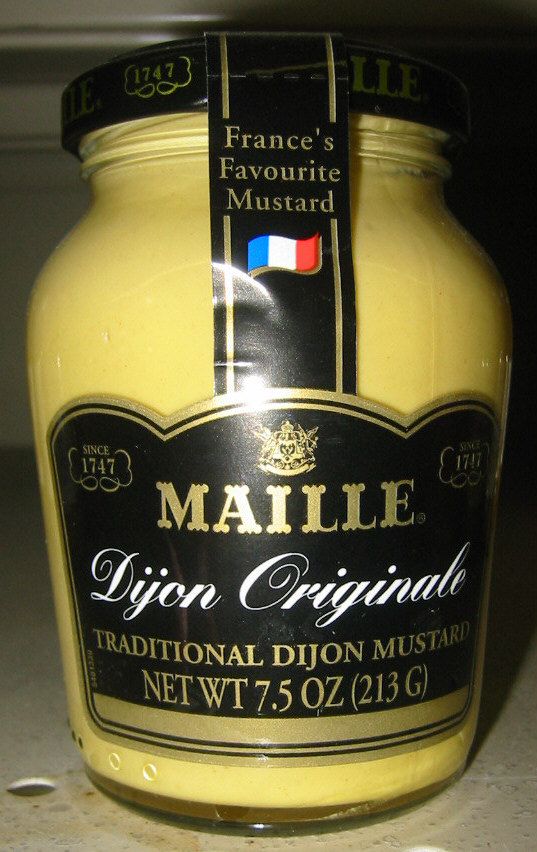Dijon mustard on:
[Wikipedia]
[Google]
[Amazon]
 Dijon mustard () is a traditional mustard of France. It is named after the city of Dijon in Burgundy, which was the center of mustard making in the late
Dijon mustard () is a traditional mustard of France. It is named after the city of Dijon in Burgundy, which was the center of mustard making in the late
Techniques actuelles de fabrication de la moutarde
– "Contemporary method for the manufacture of the mustard"
{{Condiments Mustard (condiment) Dijon French cuisine
 Dijon mustard () is a traditional mustard of France. It is named after the city of Dijon in Burgundy, which was the center of mustard making in the late
Dijon mustard () is a traditional mustard of France. It is named after the city of Dijon in Burgundy, which was the center of mustard making in the late Middle Ages
In the history of Europe, the Middle Ages or medieval period lasted approximately from the 5th to the late 15th centuries, similarly to the post-classical period of global history. It began with the fall of the Western Roman Empire and ...
and was granted exclusive rights in France in the 17th century. First used in 1336 for the table of King Philip VI, it assumed its current form in 1856 when Jean Naigeon of Dijon replaced the vinegar usually used in prepared mustard with verjuice, the acidic juice of unripe grapes.
The main ingredients are brown mustard seeds ('' Brassica juncea'') and a mixture of white wine
White wine is a wine that is Fermentation in winemaking, fermented without undergoing the process of Maceration (wine), maceration, which involves prolonged contact between the juice with the grape skins, seeds, and pulp. The wine color, colou ...
, vinegar, water, and salt designed to imitate the original verjuice. It can be used as an accompaniment to all meats, or mixed with other ingredients to make a sauce.
Commercial production
In 2008, the Anglo-Dutch group Unilever, which had several mustard plants in Europe, closed the '' Amora'' manufacturing plant. Since July 15, 2009, Amora's Dijon mustard is no longer manufactured and packaged in the town of Dijon, but in the neighbouring town of Chevigny-Saint-Sauveur. The Grey Poupon mustard brand available in the United States originated in Dijon in 1866.2022 shortage in France
France requires 35,000 tonnes of mustard seed to make Dijon mustard and 80% of the seed is imported from Canada, mainly from Alberta and Saskatchewan where most of Canada's mustard seeds are grown. Canadian production experienced a smaller crop in 2022 caused by a heatwave. The 2022 drought resulted in halving its usual harvest. The 2022 shortage was exacerbated by stockpiling by consumers.Geographical indications
Dijon mustard does not have a protected geographical indication (PGI). A 1937 decree ruled that "Dijon mustard" can be used as generic designation and has no link to a specific terroir. However, "moutarde de Bourgogne" has a PGI, and its seeds have to be produced in Bourgogne.See also
* List of condiments * List of mustard brandsReferences
External links
Techniques actuelles de fabrication de la moutarde
– "Contemporary method for the manufacture of the mustard"
{{Condiments Mustard (condiment) Dijon French cuisine